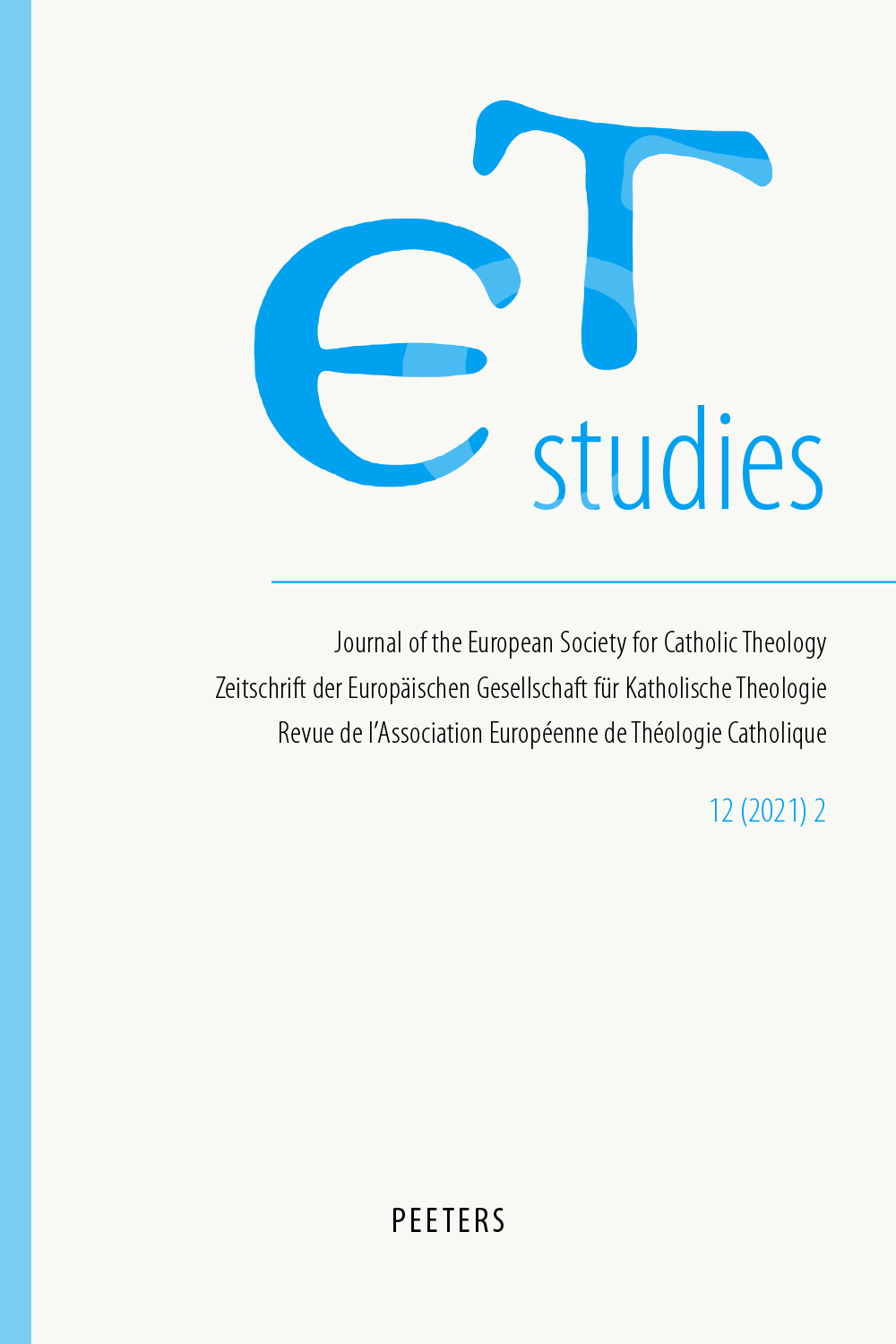 previous article in this issue previous article in this issue | next article in this issue  |

Preview first page |
Document Details : Title: Imago Dei Subtitle: An Exegetical and Theological Reappraisal Author(s): JANČOVIČ, Jozef Journal: ET-Studies Volume: 10 Issue: 2 Date: 2019 Pages: 183-206 DOI: 10.2143/ETS.10.2.3286799 Abstract : The godlikeness of human beings remains a theologoumenon of primary importance from the first page of the Bible, especially now in our post-human age with its strong tendency to embrace promising technologies (artificial intelligence and robotics) even at the expense of our own humanity. This state of affairs calls for a clearer understanding of human identity and a sound ethical response through the retelling of the normative biblical concept of the ‘image of God’. The thesis of this article consists in a consideration of the entire phrase ‘God created man in his image’ in Genesis 1:26-28 as a metaphorical and theocentric phrase with demonstratively meaningful content. It employs the relational concept of an extended human reality. In light of recent exegesis, the ‘image of God’ in Gen 1:26-27 should be seen as a signifier of human life under God, rather than a single determining characteristic or essential attribute. After exegetical and contextual readings of Gen 1:27 I will evaluate three major interpretative approaches to the ‘image of God in humanity’. In this evaluation we will see that theologians have preferred substantialist (e.g., image as soul or mind) or relational interpretations (e.g., image as relational personhood) and Old Testament scholars have preferred functional interpretations (e.g., image as kingly dominion). I outline their respective (in)consistencies in light of the meaning of the ancient text and its extended biblical context. At the end, I offer some suggestions for applying a more complete conceptualization of the ‘image of God’ to ethical practice. Die Gottesebenbildlichkeit des Menschen bleibt ein Theologumenon von fundamentaler Bedeutung von der ersten Seite der Bibel an, besonders jetzt in unserer post-humanen Zeit mit ihrer starken Tendenz, vielversprechende Technologien zu nutzen (künstliche Intelligenz und Robotik), auch auf Kosten unserer eigenen Menschlichkeit. Diese Situation erfordert ein klareres Verständnis der menschlichen Identität und eine solide ethische Antwort durch die Neuauslegung des normativen biblischen Konzepts des 'Bildes Gottes'. Die These dieses Artikels besteht darin, den gesamten Satz 'Gott erschuf den Menschen als sein Bild' in Genesis 1,26-28 als metaphorischen und theozentrischen Satz mit demonstrativ bedeutungsvollem Inhalt zu betrachten. Er verwendet das relationale Konzept einer erweiterten menschlichen Realität. Im Lichte der jüngsten Exegese sollte das 'Bild Gottes' in Gen 1,26-27 als ein Signifikant des menschlichen Lebens vor Gott betrachtet werden und nicht als ein einziges bestimmendes Merkmal oder wesentliches Attribut. Nach exegetischen und kontextuellen Lesarten von Gen 1,27 werde ich drei wichtige interpretative Ansätze für das 'Bild Gottes in der Menschheit' analysieren. In dieser Auswertung werden wir sehen, dass Theologen substanzielle (z.B. Bild als Seele oder Geist) oder relationale Interpretationen (z.B. Bild als relationale Persönlichkeit) bevorzugt haben, und dass Alttestamentler funktionale Interpretationen (z.B. Bild als Königsherrschaft) vorgezogen haben. Ich skizziere die jeweiligen (In-)Konsistenzen im Hinblick auf die Bedeutung des uralten Textes und seines erweiterten biblischen Kontextes. Am Ende biete ich einige Vorschläge, um eine vollständigere Begriffsbestimmung des 'Bildes Gottes' in der ethischen Praxis anzuwenden. La ressemblance de l’être humain avec Dieu reste un theologoumenon de première importance depuis la première page de la Bible, tout spécialement aujourd’hui, notre époque post-moderne ayant une forte tendance à adopter des technologies prometteuses (intelligence artificielle et robotique), fût-ce au détriment de notre propre humanité. Cet état de fait requiert une compréhension plus claire de l’identité humaine et une réponse éthique solide par le biais de la réaffirmation du concept biblique normatif d’«image de Dieu». Cet article prône la prise en compte de l’ensemble de la phrase «Dieu créa l’homme à son image» (Gn 1,26-28) comme une expression métaphorique et théocentrique manifestement signifiante. Il recourt au concept relationnel d’une réalité humaine élargie. À la lumière de l’exégèse récente, «l’image de Dieu» en Gn 1,26-27 devrait être comprise comme un signifiant de la vie humaine selon Dieu plutôt que comme une caractéristique déterminante ou un attribut essentiel. Du fait de sa nature métaphorique, l’«image de Dieu» est implicitement porteuse d’une richesse de sens qui vaut la peine d’être examinée. Après une lecture exégétique et contextuelle de Gn 1,27, j’évaluerai trois interprétations majeures de l’«image de Dieu dans l’humanité». Cette évaluation montrera que la préférence des théologiens va à des interprétations substantialistes (l’image comme âme ou esprit) ou relationnelles (l’image comme personne relationnelle) et que celle des spécialistes d’Ancien Testament à des interprétations fonctionnelles (l’image comme territoire royal). Je souligne leurs (in)cohérences respectives à la lumière de la signification du texte antique et de son contexte biblique élargi. Je fais enfin quelques suggestions pour appliquer une conceptualisation plus complète de l’«image de Dieu» à la pratique éthique. |
 |


